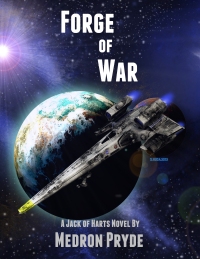Book of Civilizations – Asia
Hello, my name is Charles. Asia is the largest continent on Earth, and home to more great civilizations than any other in the history our world. It is fitting that this continent still dominates our politics to this day. Home to two great alliances and two non-aligned powers, more Asians have colonized the stars than the people of any other continent. The future is out there, and Asia may be the key to it.
Book of Civilizations
Asia
The continent of Asia is the home to many of our greatest and oldest civilizations. There are the river valleys of Mesopotamia in western Persia, where many believe ancient Eden was located, and the Indus River where Indian culture originated. Some of our earliest great cities, complete with schools, aqueducts, and roads, were built in those regions. The Mongols, the Chinese, the Tibetans, the Turkics, and the Persians, all of which lived as far back as the Ice Age themselves, show that Asia has had many ancient civilizations that have traded and warred for thousands of years.
The Mongols of northern Asia and Turkic peoples of central Asia between them have created some of the largest empires on Earth. Attila the Hun and Genghis Kahn are but two names in history that tell of these massive empires that took over broad swaths of both Asia and Europe. The Greeks and the Arabs did the same in their times, uniting the world from western India to Europe through force of arms.
But while most of those empires failed, and the people with them, the Turkics continued to influence the world for centuries after the death of Attila. They conquered India where the Arabs failed, and conquered Constantinople where the Persians failed. The Turkish Ottoman Empire would conquer almost all of the old Roman Empire, even advancing deep into Europe. It took the British to break their command of India, and the Ottoman Empire held strong until World War I shattered them. But even then, the Turkics would remain in charge of their individual nations off and on for another century, a great legacy indeed.
The ancient cultures of Asia that affect the present day are the Persians, Indians, the Chinese of course, and to a lesser degree the Tibetans. The Tibetans lived on the Tibetan Plateau, also called the Roof of the World due to its extreme elevation. They followed Bon for most of their recorded history, until Buddhism entered their lands and suppressed the older religion. Tibetan pyramids and other structures could still be seen into the Twenty-First Century, but were lost when China demolished them in their continuing effort to erase Tibetan culture.
The Chinese originated in the Yellow River valley, east of the Tibetan mountains, and expanded to the Pacific Ocean in the east. They fought the Mongols in the north for millennia, sometimes ruling them, and sometimes being ruled by them. Like most of the ancient civilizations, they built pyramids and other grand structures that can be seen to this day. The Great Wall of China, built to stop the Mongol raiders, is to this day the largest construct of mankind in all the worlds, though few outsiders have seen it since the Second Great Depression and the Islamic Jihad.
The Indians started in the Indus River Valley before moving south and east. They took over the entire Indian Subcontinent, from the mountains in the north to the seashores in the south, and two of the great religions of our worlds started there. Hinduism and Buddhism. Their ancient pyramids are still open to visitors from all nations. Most of the time they warred with themselves and had little more than trade relations with outsiders. The Arab Muslim invasion in the eighth century forced the Hindus to unite, but once again they returned to their infighting. Then the Turkic Muslims invaded in the eleventh century and slowly conquered almost the entire subcontinent, forcibly converting most of the Hindus there.
The Persians are still one of the proudest peoples in the world, perhaps befitting their command of what is generally considered one of the cradles of civilization. They built massive pyramidal ziggurats that towered above the landscape, many of which have been rebuilt in recent centuries. They learned to follow the ideas of Zoroastrianism, a monotheist religion that has much in common with Judaism and Christianity. Unfortunately for Persia, it began to suffer conquests and invasions from Alexander the Great, the Arabs, and the Mongols. While the Greeks and Mongols did not care about the culture, as long as they didn’t rebel, the Arabs did everything they could to erase the Persian culture.
And then of course there are the Jews and the Arabs, who between them created three of the seven most powerful religions in the history of mankind. While they were once the same people, they have fought each other for thousands of years. One of the hearts of their rivalry is the Jewish claim over the lands of ancient Israel, given to them by God, through their ancestor Abraham who bequeathed it to them. The Arabs on the other hand lay claim over those same lands, as their birthright through their ancestor Abraham who gave it to them.
Religion is another heart to their differences. While they both worship the same Creator God, they have very different Prophets who preach very different things. The Muslims, as the last of the Abrahamic religions, believe their religion to be the best, and therefore it is their duty to convert all the worlds to it, by any means necessary.
The Jews seemed happy to remain in their ancestral lands, until forcibly taken away as happened under the ancient Babylonian and Roman Empires. The Arabs also seemed willing to remain where they were, in the deserts where others preferred not to live. The rise of Muhammad would change the Arabs forever, and bring great change to the world at large. He united the warring Arab factions against everybody else, and sent them out to conquer the world. They spread out from Arabia and conquered ancient Israel, North Africa, Persia, and even tried to conquer India. They spread Islam to the Turkics who conquered Byzantium and India, and the Muslim empires became the greatest powers of their time in the world.
They were defeated by the Mongol hordes of course. The Mongols conquered everybody they took the time to attack, uniting the world from Eastern Europe to the Pacific Ocean under a single government. While their growth slowed down after the death of Genghis Khan, the Mongol Empire continued to grow and became the greatest nation in recorded history. They defeated anyone who fought them, but practiced religious and cultural toleration after securing their new territory. That allowed previous cultures to continue to survive throughout the Mongol Empire’s history.
No nation or group of nations could stop them. It is interesting that the Mongols, after facing and defeating the greatest nations of the world, were defeated by a threat so small they could not even see it. A plague known as the Black Death ravaged the empire from the Pacific to the Atlantic, and killing countless millions of people in the empire and outside the borders as well. It would take centuries for all of the Mongols to fall of course, but the Black Death broke their utter domination, and gave the other nations of the world a fighting chance to drive them away.
The civilizations of Asia picked themselves up and began to rebuild after The Plague receded, but Asia is typically a continent where change takes place over centuries. China rebuilt, Muslim Turkics slowly conquered the Eastern Roman Empire, India, and expanded into the islands beyond it, and the Persians took their future back into their hands. The Mongols had never conquered the Arabs, but the Black Death still devastated their cities, leaving them to prefer the nomadic lifestyle of their ancestors.
Then the nations of Europe recovered from the Black Death and spread out to conquer the world. Arabs, Persians, Turkics, Chinese, and more fell to the powers of Europe. The Russians crossed Siberia to the Pacific Ocean, and farther. The British Empire became the largest empire in the history of the world. The Turkish Ottoman Empire held until World War I destroyed them, and isolationist Japan rose up to challenge every power in Asia and the Pacific before falling in World War II.
After that war ended, Western Europe abandoned its Asian possessions, some by choice and some by force. The Jews returned to Israel and Indian Hindus reclaimed their power, igniting wars with the Muslim nations that would last for over a century. Soviet Russia’s Communist Revolution spread throughout most of the rest of Asia, making it in the new front line of the Cold War between West and East.
For half a century, almost every nation in the world picked a side, until Russia’s economy collapsed. The Turkic nations enjoyed their independence for a time, China grew to fill the power vacuum, and the Muslims sent their Jihadists against every nation that did not convert to Islam. Russia, China, India, Africa, Europe, Australia, and America all felt the sting of the Islamic Jihad. Some nations fought back against the Jihadists while some tried to mollify them.
The economic strains of the Islamic Jihad, and the mounting costs of governmental overspending, caused runaway inflation and resulted in the general collapse of the Western economies. And when they collapsed, the rest of the world went with them, resulting in the Second Great Depression. Western soldiers returned home, leaving a power vacuum that the Muslims quickly sought to fill.
They escalated from sending small numbers of Jihadists spreading terror throughout the world to full armies bent on conquest, and the nations of Asia and beyond reeled. Of the Asian governments, Russia, China, India, and Israel fought the hardest and bloodiest, in a total war that left tens of millions dead on all sides. And when armies weren’t enough to win the wars, nuclear weapons deployed. Most of the warheads failed to detonate, but hundreds of thousands died under the mushroom clouds that appeared.
Russia, China, and India fought Jihadist cells inside their borders, and sent their armies to smash the neighbors that supported them. The mountains of central Asia were difficult combat environments for the Russians and Indians, and proved again why the denizens of those areas have broken so many empires in the past. China took the opportunity to not only rid themselves of any Muslim groups they could find, but also to conquer the various smaller nations around them in the name of Pan-Asian security.
Israel was the target of a far more desperate war. Surrounded by Muslim nations that dreamed of driving the Jews into the sea, they became the target of four neighboring armies, plus numerous elements loaned by other governments. The Israelis had no option to retreat, no room to fall back to that did not leave their civilians in danger, so they attacked. They targeted the Arabian air forces first, with tarmac-shredding bombs and bunker busters. They even used large fuel air explosives and small tactical nuclear weapons in their strikes, though most of the nuclear warheads failed to detonate. The aerial superiority those strikes secured helped keep Israel alive in the years to come.
In the middle of the Jihad, a revolution swept through Persia that would change everything. The Persian people had long protested and fought the regime installed by the Islamic Revolution of the previous century, and when the government cracked down on them after losing most of its air force to Israel, a new Persian Revolution swept through the streets. The Supreme Leader ordered the military to kill the revolutionaries, and the armed forces splintered as entire regiments rebelled against the idea of shooting their own people. The governmental loyalists lost and the Islamic government collapsed. The successful revolution in Persia sparked further revolutions in Cairo and Constantinople that further rocked the Muslim World, denying them the resources of some of the most powerful Middle Eastern nations.
It would be decades before the Islamic Jihad truly ended, but the fall of their most powerful nations and the destruction of their training camps left the Jihadists reeling. Russia conquered the Turkic nations of Central Asia, India secured its old borders, and China expanded into a true maritime empire when it followed the Jihadists to their bases in the southern Pacific. They occupied the Philippines, Taiwan, Indonesia, and many other nations in the area.
And in the largest amphibious assault since World War II, Chinese troops invaded Japan. Neither the Emperor of Japan nor his government surrendered. They evacuated when it was clear they could not win, and the Chinese installed a government to sign the surrender. To this day, the Free Japanese and their Emperor seek to find a way to liberate their homeland from their Chinese occupiers.
After the successful conquest of Japan, China turned their sights to New Guinea and Australia. When they moved to take the region, they met a combined force of American, British, Canadian, and Australian ships in the islands of Indonesia. The alliance stopped them from moving further into the Pacific, more by their presence than with weapons. There was some fighting, but it was generally more sparring for position rather than all out war. In the end, China stepped back into their firmly held positions and allowed the Western Alliance to think it had won a great victory.
With most of the Islamic governments destroyed, occupied, or overthrown, the Islamic Jihad was effectively over. The Islamic Brotherhoods continued to fight, but they had few resources and fought from secret bases that were constantly under threat of destruction. There were no safe havens for them anywhere on Earth. Asia and the rest of the world began to work itself out of the Second Great Depression and return to space.
By the end of the century, the Persian Revolution had resulted in a greatly expanded Persian Republic and a return of traditional Persian culture to the regions long suppressed by their previous rulers. Zoroastrianism returned to the forefront of Persian religion and the first Persian crew sent to space burned a fire to their ancient creator. A much larger Israel went to space on its own as well, as did India, China, and of course Russia. Space was the future, and every civilization sought to claim as much of it as they could.
When the Chinese made the first hyperspace jump in 2105, it brought the space race into a new dimension. Humanity finally had the stars to go to, not simply other worlds and moons. The Western Alliance and Russians followed them in 2110, and Persia and India joined the hyperspace club in 2115 and 2120. The nations of Asia stretched out and began to explore the universe, and they found many worlds waiting for us to colonize them.
All humanity needed was to send large amounts of cargo into space far cheaper than rockets could. Orbital Elevators were the answer, and the Western Alliance built one at Port Harcourt in Africa. China quickly answered by building one in Singapore, and Russia soon helped the Indians build one at Colombo, Sri Lanka. Two more elevators would follow quickly, an American one at Panama and one built by Australia at Jayapura in New Guinea.
Using the elevators mankind went to space, and the Solar System filled with new colonists from every nation in the world. The major nations sent colonies to the stars, and in the next century they colonized seventy-six worlds up to 100 lightyears away from Earth. China alone colonized twenty-seven worlds, with Russia colonizing another ten. India and Persia each colonized four, and even Israel colonized their New Zion.
It was not a period of peace for Asian’s nations, but rather a period of not shooting each other on a regular basis. Persia and India cooperated with each other, but remained neutral to the large alliances. India negotiated understandings with Nepal and the other nations of the Himalayas, and gave the Tibetans asylum from Chinese rule. They also became a center for other peoples who did not want to live under China, offering asylum to hundreds of thousands. Likewise, Persia welcomed Turkic refugees from the neighboring regions that Russia controlled.
When the Peloran made contact in 2205, it changed our worlds again. We finally knew we weren’t alone in the universe, and they brought new technologies that soon filtered into the non-aligned nations of Asia. Medical treatments that extended our lives and ended diseases, and cheap gravitic tech that allowed us to go to the stars without a governmental-sized space program. Soon after the Peloran arrived, the Shang showed up to give technology to the Chinese and the Roderan began helping the Russians. Persia and India received no direct aid from alien sources, but they purchased many technologies from the other nations, giving them a way into the new Great Space Race.
For the next century, the nations of Asia explored and expanded. While the Russians, the Chinese, and the Western Alliance engaged in a long cool war over colonies, India and Persia maintained they neutrality. They kept their distance from the major colonies, hoping that distance would keep the opportunists from targeting them. In fact, the majority of their new colonies after Contact were near the Pleiades Cluster and the large Peloran base that protected the Terran side of the Taurus Gate. The Chinese and the Russians sparred with each other and the Western Alliance for colonies inside the Terran Bubble, attempting to concentrate their power.
When the Shang attacked Yosemite, Persia and India kept their distance. They did not want war. Neither did Russia who sat back and watched. Of the Asian nations, only China went to war with the Western Alliance, supporting the Shang. The rest of the Asian nations are simply seeking to avoid The War and continue on with their lives as normal while the known galaxy devolves into chaos. Only time will tell if they can continue the balancing act of deciding for neither side.
 The Martian Affair on Amazon
The Martian Affair on Amazon Forge of War on Amazon
Forge of War on Amazon The Audacious Affair on Amazon
The Audacious Affair on Amazon Angel Flight on Amazon
Angel Flight on Amazon Angel Strike on Amazon
Angel Strike on Amazon Angel War on Amazon
Angel War on Amazon The Family Affair on Amazon
The Family Affair on Amazon The Thunderbird Affair on Amazon
The Thunderbird Affair on Amazon Wolfenheim Rising on Amazon
Wolfenheim Rising on Amazon Wolfenheim Emergent on Amazon
Wolfenheim Emergent on Amazon The Gemini Affair on Amazon
The Gemini Affair on Amazon
Discussion ¬